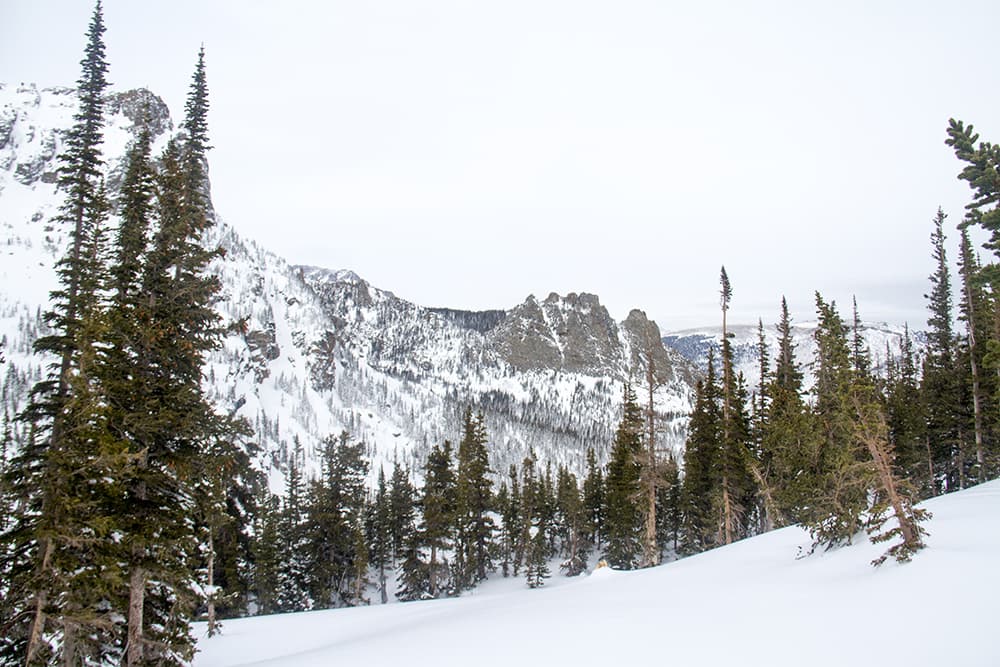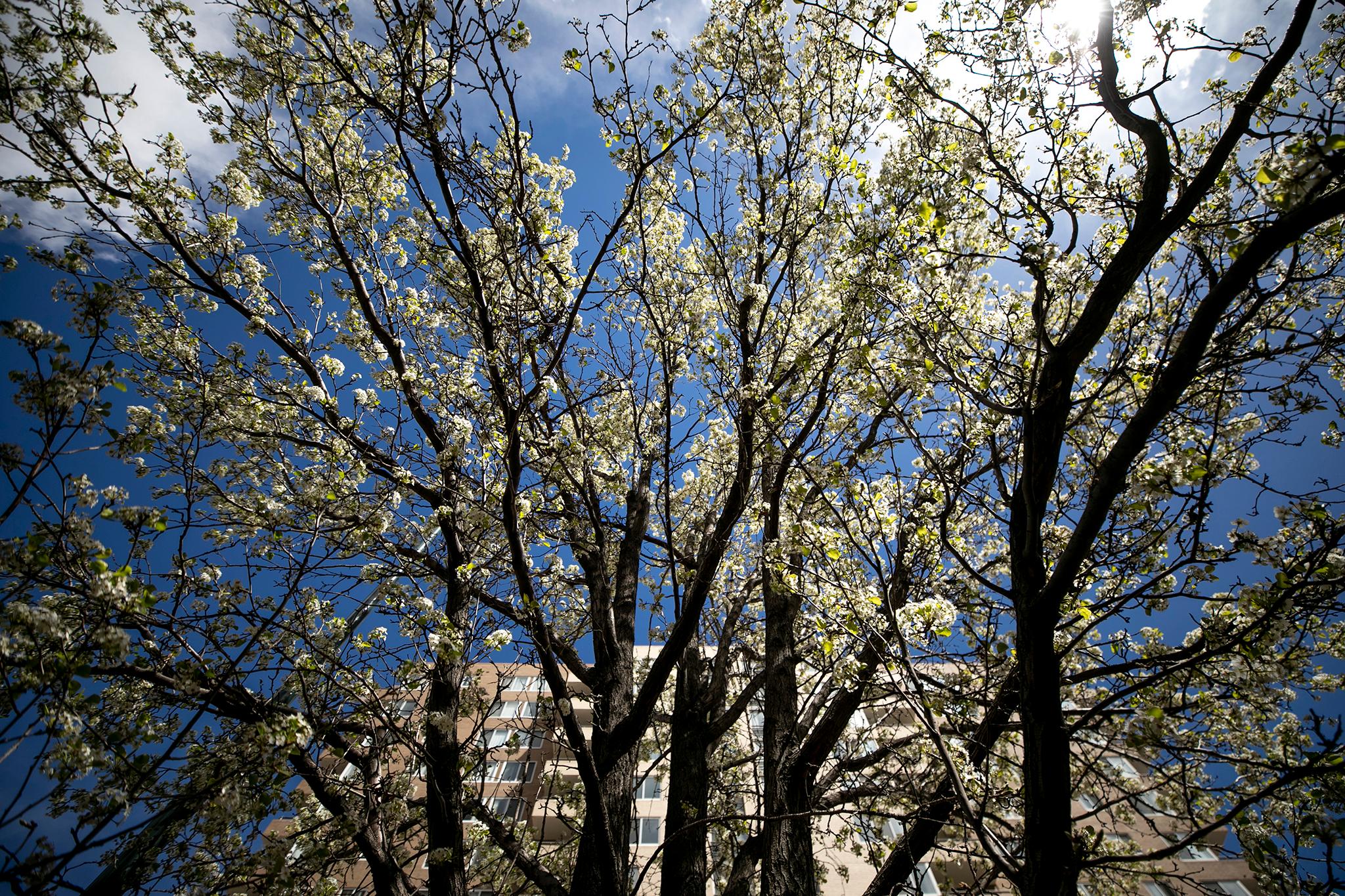
CHEYENNE, Wyo. — Across the U.S. West, wildlife managers are reporting above-normal losses of deer, elk and other wildlife following one of the coldest and snowiest winters in decades. Here's a look at what they found:
California
Heavy snows in California's mountains over the winter caused an unusually high number of deaths among the endangered Sierra Nevada bighorn sheep herd, according to Jason Holley, supervising wildlife biologist with the state's wildlife agency.
An estimated 40 to 60 sheep failed to survive. Some died from avalanches, others starved because they were unable to get to food. The herd numbers about 500 to 600, and the loss from just the weather is considered significant, Holley said.
California wildlife managers also noted some losses of deer to snow and cold.
Colorado

South-central Colorado saw high fawn mortality over the winter, according to Andy Holland, big game manager with Colorado Parks and Wildlife.
Estimates are that only 20 to 25 percent of fawns survived in the Gunnison Basin, mainly because of a large snowfall event. Wildlife managers already have reduced mule deer hunting licenses in the basin by 60 percent for bucks and 80 percent for does.
A deer herd in northwest Colorado, near the Wyoming border, also suffered above-average fawn losses, but it was over its population objective.
Idaho
Idaho saw its third worst winter for mule deer fawn survival in the past 18 years, according to Roger Phillips, Idaho Fish and Game Department spokesman.
Of the 10 areas where mule deer are monitored, the lowest fawn survival rate was 3 percent, and the highest was 60 percent.
Mule deer numbers across the state are still healthy enough to withstand the loss as long as next winter is milder.
Concern for wildlife prompted Idaho to initiate supplemental feeding over the winter on a scale that hadn't been done in about 20 years. It's believed that white tail deer, bighorn sheep and elk came through the winter with normal losses.
Oregon
Oregon saw a drop in winter survival of mule deer fawns, said Pat Matthews, a biologist with the state's wildlife agency.
His district recorded a ratio of 24 fawns per 100 adults surviving into this spring, compared with the average of 34 fawns per 100 adults.
Other parts of the state recorded as few as 11 fawns per 100 adults making it through the winter.
Elk appeared to weather the snowy winter with average losses, but some areas recorded above-average pronghorn losses.
Deer and pronghorn hunting tags are being reduced in areas with lower fawn survival rates.
Utah
Above-average losses of mule deer fawns were recorded in northern Utah, where only 10 percent of one herd's fawns survived, said Justin Shannon, big game program coordinator for the Utah Division of Wildlife Resources.
The losses occurred despite the state's efforts to provide food supplements to the deer.
Shannon blamed deep snow, mainly from three storms in December and January. Snow depths exceeded 150 percent of normal in some areas.
Mule deer hunting permits in northern Utah will be fewer this fall as a result.
Elsewhere in the state, deer survival rates averaged 89 percent for adults and 52 percent for fawns.
Washington
Eastern Washington's three primary elk herds saw record low calf-to-cow ratios coming out of the winter, particularly along the Cascades' eastern slopes, according to Brock Hoenes, statewide elk specialist for the state.
Adult mortality appears to be normal, but elk calf numbers were at 18 to 19 calves per 100 cows in eastern Washington. Normally, the end of winter would see 30 to 40 calves, Hoenes said.
Mule deer and bighorn sheep also appeared to sustain above-average losses.
Winter hasn't been this tough on the state's elk calves in over 10 years.
Elk hunting permits have been reduced as a result, especially cow permits.
However, Hoenes said elk numbers on the whole are healthy. In fact, he said Mother Nature helped with recent state efforts to bring down excessive elk populations in some areas. Elk in western Washington, with the exception of the Mount St. Helens herd, came through the winter OK.
The Mount St. Helens herd was battling hoof disease, which may have contributed to bigger losses.
Wyoming
Mule deer and pronghorn antelope west of the Continental Divide in Wyoming suffered significant losses this winter, probably the worst in more than 30 years, said Bob Lanka, a wildlife supervisor with the Wyoming Game and Fish Department.
Many areas saw up to 90 percent loss of deer fawns and up to 35 percent loss of adult deer.
The Wyoming Range mule deer herd, which has been subject to radio-collar study for nearly 25 years, lost all 26 fawns that entered the winter, and 200 total carcasses from the herd were found this spring. Normally, 30 to 50 carcasses are found after the winter.
Elk losses also were higher than normal, which is unusual because elk are hardier animals, Lanka said.
Another troubling indicator of the harsh winter is unborn fawns appear to be smaller than normal in some herds.
Fewer hunting permits fkoor mule deer and antelope will be issued this fall in western Wyoming because of the losses, Lanka said.











